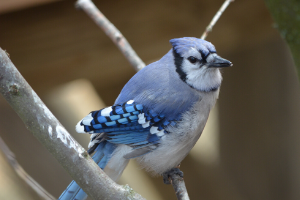What is migration? Why do animals migrate? Why should you care? Since today is World Migratory Bird Day, I thought I would share with you why bird species are so important and how you can get involved in helping them!
 Migration is the seasonal movement of animals from one location to another. Typically, animals migrate in order to winter in milder climates. Many species will spend the summer further north, and travel south for the winter (in the Northern Hemisphere). It’s kind of like how some people will vacation in Florida or another southern state in the winter to escape the snowy northern weather.
Migration is the seasonal movement of animals from one location to another. Typically, animals migrate in order to winter in milder climates. Many species will spend the summer further north, and travel south for the winter (in the Northern Hemisphere). It’s kind of like how some people will vacation in Florida or another southern state in the winter to escape the snowy northern weather.
There are a wide variety of migratory songbirds in North America, including species of warblers, thrushes, orioles, grosbeaks, tanagers and more. These species typically spend their summers in their breeding grounds, which include the northern U.S. and Canada, and winter in the southern U.S., Mexico and sometimes even Central America or northern South America. Their breeding grounds are the best habitats for finding mates, laying eggs, and raising chicks, but once the temperature starts to drop, they head south to more suitable wintering grounds. This means they spend their spring and fall travelling cross-country between their breeding and wintering grounds. These birds can travel thousands of miles during migration, and up to 200 miles in one flight. They typically migrate at night and rest up during the day for the next leg of their journey. This migration is also important for humans, since birds keep pest insect populations down as they pass through areas, act as seed dispersers, and are pollinators of many plant species. They also are very important culturally as they represent journeys and hope.
 Though this journey is necessary, it is not without risk. Birds travelling hundreds of miles in one night are often physically pushing themselves to their limits. They are susceptible to predation and disease, but often the greatest risk to them is caused by humans. Collisions with windows and other man-made structures during migration is the leading cause of fatality in North American songbirds. It is estimated that half a billion birds are killed every year in North America alone due to window strikes. Another huge factor in bird fatalities is the domestic cat. The domestic cat is the number one overall human-caused threat to birds in the U.S., regardless of season. It is estimated that over 2 billion birds are killed each year by cats.
Though this journey is necessary, it is not without risk. Birds travelling hundreds of miles in one night are often physically pushing themselves to their limits. They are susceptible to predation and disease, but often the greatest risk to them is caused by humans. Collisions with windows and other man-made structures during migration is the leading cause of fatality in North American songbirds. It is estimated that half a billion birds are killed every year in North America alone due to window strikes. Another huge factor in bird fatalities is the domestic cat. The domestic cat is the number one overall human-caused threat to birds in the U.S., regardless of season. It is estimated that over 2 billion birds are killed each year by cats.
So how can you help? There are many ways! First and foremost, you can support the Akron Zoo or other AZA-accredited zoos! AZA stands for the Association of Zoos and Aquariums, and accredited facilities are deeply involved in conservation of many different species. The AZA’s Saving Animals From Extinction (SAFE) program, for example, focuses conservation efforts on certain species who are threatened with extinction. North American songbirds just became a SAFE species, and the Akron Zoo is very involved! The Aviary in Grizzly Ridge at the Akron Zoo has over 30 different species of North American songbirds, including migratory birds, such as a chestnut-sided warbler, Baltimore orioles, a northern waterthrush, a black-throated green warbler, a yellow warbler, a rose-breasted grosbeak and many more. As residents of the zoo, these individuals are able to act as ambassadors for their species. After sustaining injuries in their native habitats, they were deemed non-releasable by wildlife rehabilitation experts, so the zoo offers them a safe and caring home. Each time you visit the Akron Zoo, you help support conservation efforts for these birds, as well as others like them through our conservation efforts!
Here are a few more ways you can get involved in protecting migratory birds:
 Turn off interior lights at night, reduce exterior lighting or install window decals to help reduce window strikes, especially during peak migration season (April-May, September-October).
Turn off interior lights at night, reduce exterior lighting or install window decals to help reduce window strikes, especially during peak migration season (April-May, September-October).- Volunteer with Ohio Lights Out, an organization dedicated to reducing bird window collisions. Visit Ohio Lights Out to learn more!
- Keep your pet cats inside.
- Plant a garden to attract different species to your yard. Reducing or eliminating the use of pesticides will also help create a suitable environment for these birds and many other species!
Thank you for joining us to celebrate World Migratory Bird Day! We hope to see you at the zoo soon!
